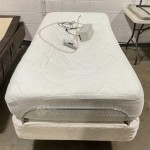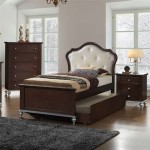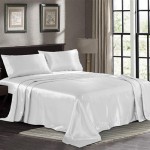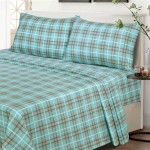Queen Size Topper For Bed: Enhancing Comfort and Support
A queen size bed topper is an additional layer of material placed on top of a queen size mattress to enhance comfort, support, and overall sleep quality. It functions as a supplementary component, providing cushioning, pressure relief, and temperature regulation. The selection of a suitable queen size bed topper involves considering several factors, including material composition, thickness, density, and individual sleeping preferences. This article explores the various aspects of queen size bed toppers, providing information to assist in making an informed purchase decision.
Understanding the Purpose of a Queen Size Bed Topper
Queen size bed toppers serve multiple purposes, each contributing to an improved sleeping experience. Primarily, they are used to augment the comfort level of a mattress, particularly if the existing mattress is too firm or lacks sufficient cushioning. Toppers can also extend the lifespan of a mattress by absorbing some of the wear and tear associated with nightly use. Furthermore, certain toppers offer specialized benefits such as pressure point relief, which can be beneficial for individuals with joint pain or other musculoskeletal issues. Finally, some queen size bed toppers can help regulate body temperature, keeping the sleeper cool during warmer months and warm during cooler months.
The addition of a queen size bed topper can be a cost-effective alternative to replacing an entire mattress. Instead of incurring the expense of a new mattress, investing in a quality topper can significantly improve the comfort and support provided by the existing mattress. This is particularly advantageous for individuals who are satisfied with the fundamental support structure of their mattress but desire an enhanced level of cushioning or specific performance characteristics.
Another significant benefit of a queen size bed topper is its ability to adapt to individual sleeping preferences. Different materials offer varying degrees of firmness, softness, and responsiveness. This allows individuals to customize the feel of their bed to align with their particular needs and preferences. For example, a side sleeper might benefit from a softer topper that conforms to the contours of their body, while a stomach sleeper might prefer a firmer topper that provides more support to the spine.
Types of Materials Used in Queen Size Bed Toppers
The performance and characteristics of a queen size bed topper are largely determined by the materials from which it is constructed. A variety of materials are commonly used, each offering distinct advantages and disadvantages. Understanding the properties of these materials is crucial for selecting a topper that meets specific needs and preferences.
Memory Foam: Memory foam is a popular choice for bed toppers due to its ability to conform to the shape of the body, providing excellent pressure relief. It is known for its slow response time, which allows it to cradle the sleeper and distribute weight evenly. Memory foam toppers are often preferred by individuals who experience joint pain or back pain. However, memory foam can retain heat, which may be a concern for hot sleepers. Gel-infused memory foam toppers are designed to mitigate this issue by incorporating gel particles that help dissipate heat.
Latex: Latex is a natural material derived from rubber trees. It is known for its durability, responsiveness, and breathability. Latex toppers offer a supportive and resilient feel, providing a balance between comfort and support. They are less prone to heat retention compared to memory foam. Latex toppers are available in two primary types: Dunlop and Talalay. Dunlop latex is denser and firmer, while Talalay latex is softer and more resilient.
Down and Feather: Down and feather toppers provide a plush and luxurious feel. They are often filled with a combination of down feathers (the soft undercoating of waterfowl) and feathers (the outer plumage). These toppers are incredibly soft and conforming, providing a feeling of being enveloped in comfort. However, they may not offer as much support as memory foam or latex toppers. Down and feather toppers also require regular fluffing to maintain their loft and prevent clumping.
Polyester Fiberfill: Polyester fiberfill toppers are a more affordable option. They are made from synthetic fibers that provide cushioning and support. Polyester fiberfill toppers are hypoallergenic and relatively easy to care for. However, they tend to flatten over time and may not be as durable as other types of toppers. They also do not offer the same level of pressure relief or temperature regulation as memory foam or latex toppers.
Wool: Wool toppers are known for their natural temperature-regulating properties. Wool fibers can absorb moisture and release it into the air, helping to keep the sleeper cool in the summer and warm in the winter. Wool toppers are also naturally hypoallergenic and resistant to dust mites. They offer a supportive and breathable sleep surface.
Factors to Consider When Choosing a Queen Size Bed Topper
Selecting the right queen size bed topper requires careful consideration of several factors. Individual sleeping preferences, body weight, sleeping position, and budget all play a role in determining the most suitable option. It is essential to assess these factors to ensure that the chosen topper provides the desired level of comfort, support, and durability.
Thickness and Density: The thickness and density of a bed topper influence its level of cushioning and support. Thicker toppers generally provide more pressure relief and can significantly alter the feel of the mattress. Denser materials offer greater support and durability. The optimal thickness and density depend on individual preferences and body weight. Lighter individuals may prefer thinner, less dense toppers, while heavier individuals may require thicker, denser toppers for adequate support.
Sleeping Position: Sleeping position is a crucial factor in selecting a bed topper. Side sleepers typically benefit from softer toppers that conform to the contours of their body, providing pressure relief at the shoulders and hips. Back sleepers may prefer firmer toppers that provide spinal alignment and support. Stomach sleepers generally require the firmest toppers to prevent their hips from sinking into the mattress, which can lead to lower back pain.
Firmness: The firmness of a bed topper is a subjective measure of its resistance to compression. Toppers are typically categorized as soft, medium, or firm. Soft toppers provide the most cushioning and are ideal for individuals who prefer a plusher feel. Medium toppers offer a balance between comfort and support. Firm toppers provide the most support and are suitable for individuals who require spinal alignment or prefer a more rigid sleep surface.
Temperature Regulation: Temperature regulation is an important consideration for individuals who tend to sleep hot. Memory foam toppers can retain heat, while latex and wool toppers are more breathable. Gel-infused memory foam toppers are designed to mitigate heat retention. Individuals who sleep hot should consider toppers made from breathable materials or those with temperature-regulating features.
Allergies and Sensitivities: Individuals with allergies or sensitivities should choose toppers made from hypoallergenic materials. Latex, wool, and polyester fiberfill toppers are generally considered hypoallergenic. It is important to ensure that the topper is free from potentially irritating chemicals or dyes. Look for certifications such as Oeko-Tex Standard 100, which indicates that the topper has been tested for harmful substances.
Budget: Bed toppers range in price from relatively inexpensive to quite costly. The price depends on the materials used, the thickness and density of the topper, and the brand. It is important to establish a budget before beginning the shopping process. While it may be tempting to opt for the cheapest option, it is often worth investing in a higher-quality topper that will provide better comfort, support, and durability. A well-chosen topper can significantly improve sleep quality and extend the lifespan of a mattress.
Maintenance and Care: The maintenance and care requirements of a bed topper vary depending on the materials used. Some toppers can be machine washed, while others require spot cleaning or professional cleaning. It is important to follow the manufacturer's instructions for cleaning and care. Regular cleaning can help to maintain the hygiene and longevity of the topper. Using a mattress protector can also help to prevent stains and damage.
In summary, selecting a queen size bed topper requires careful consideration of material composition, thickness, density, firmness, temperature regulation, allergies, budget, and maintenance requirements. By evaluating these factors, individuals can choose a topper that enhances their sleep quality and provides the desired level of comfort and support.

Mellow 4 5 Zone Cooling Gel Memory Foam Mattress Topper Queen

Stylewell 3 In Gel Infused Memory Foam Queen Mattress Topper Thd Mfvt 3q The Home

Best Mattress 3 In Queen Cooling Gel Ventilated Memory Foam Topper Hd Gmt3sq The Home

2 Inch Mattress Topper Queen Gel Memory Foam In A Box

3 Inch Mattress Topper Queen Gel Memory Foam In A Box Blue

Topper 4 Inch Memory Foam Queen Size Mattress For Sleep Certified

L Baiet Cooling Gel Memory Foam Mattress Topper Medium Firm Blue Queen 3 Inch

Bedstory 3 Inch Mattress Topper Bamboo Charcoal Green Tea Copper Infused Bed

Lucid Comfort Collection 4 In Gel And Aloe Infused Memory Foam Topper Queen Hdlu40qq30gt The Home

Bedlore 3d Fill Bamboo Fabric Mattress Topper








